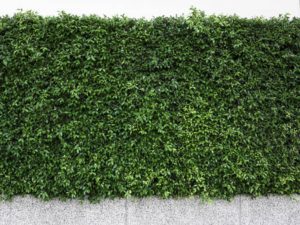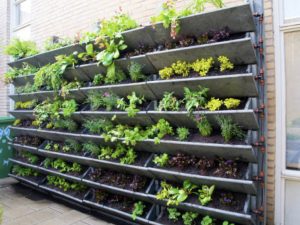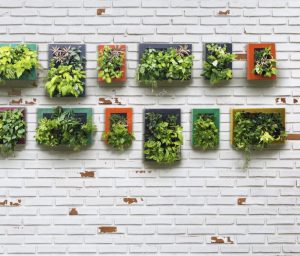In the heart of bustling cities, where concrete towers dominate the skyline, a new form of urban landscaping is taking root—green walls and vertical gardens. These living installations are more than just eye-catching displays; they are powerful tools that blend nature and architecture, offering many benefits for both the environment and urban dwellers. In this blog, we will embark on an inspiring journey through the world of green walls and vertical gardens, exploring their role in revitalizing cityscapes, purifying the air we breathe, and adding a touch of natural splendour to urban life.

Understanding Green Walls and Vertical Gardens
At their core, green walls and vertical gardens are vertical displays of vegetation that transcend traditional gardening and horticulture. First and foremost, green walls, also known as living walls or green facades, adorn building exteriors, transforming them into vertical canvases of greenery. On the other hand, vertical gardens are freestanding structures or partitions that accommodate various plant species, often arranged artistically to create living sculptures.

Environmental Benefits of Green Walls and Vertical Gardens
Air Purification: These living installations act as natural air purifiers amid urban pollution. Through photosynthesis, plants absorb harmful pollutants such as carbon dioxide, nitrogen oxides, and volatile organic compounds while releasing oxygen into the atmosphere. This natural air filtration helps combat urban smog and improves air quality for city residents.
Biodiversity and Wildlife Support: Moreover, green walls and vertical gardens provide vital habitats for a diverse range of plant species, attracting insects, birds, and other wildlife to urban areas. The presence of these mini-ecosystems fosters biodiversity, promoting a healthier and more balanced urban environment.

Enhancing Urban Aesthetics
Living Murals: Imagine walking down the streets of a city adorned with vibrant living murals—a feast for the eyes and a balm for the soul. Notably, green walls serve as living artworks, adding a touch of creativity and natural beauty to often monotonous cityscapes.
Architectural Integration: Additionally, architects and designers increasingly incorporate vertical gardens into building designs, seamlessly merging nature with urban structures. From elegant office buildings to modern apartment complexes, these green installations enhance the aesthetic appeal and create a harmonious balance between the built environment and nature.

Urban Cooling and Energy Efficiency
Alleviating the Heat Island Effect: In dense urban areas, concrete and asphalt absorb and retain heat, leading to elevated temperatures known as the “heat island” effect. In contrast, green walls and vertical gardens combat this issue by providing cooling effects through evapotranspiration, reducing ambient temperatures and creating more comfortable microclimates.
Energy Conservation: These green installations contribute to energy efficiency by shading buildings and reducing heat absorption. Consequently, they can lead to reduced energy consumption for cooling purposes, contributing to a greener and more sustainable urban landscape.

Creating Green Masterpieces: Practical Considerations
For those inspired to bring green walls and vertical gardens into their urban spaces, here are some practical considerations to get started:
Plant Selection: Choose plant species that are well-suited to the local climate, considering factors such as sunlight exposure and water requirements.
Irrigation and Maintenance: Implement efficient irrigation systems and establish a regular maintenance routine to ensure the health and longevity of the green installations.

Global Inspirations: Successful Case Studies
The Vertical Forest, Milan: A renowned example of sustainable architecture, this residential complex features terraces adorned with trees and plants, contributing to a lush urban forest.
Gardens by the Bay, Singapore: These futuristic vertical gardens are iconic symbols of Singapore, showcasing the city’s commitment to green urban planning.
In conclusion, green walls and vertical gardens have emerged as powerful allies in the quest for sustainable and visually appealing urban environments. Through their ability to purify the air, enhance biodiversity, and bring natural beauty to cityscapes, they transform how we interact with our urban spaces. By embracing these living masterpieces, we can create a greener and more harmonious coexistence with nature, forging a path towards healthier, vibrant, and ecologically conscious future cities.